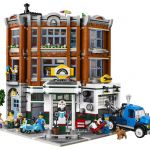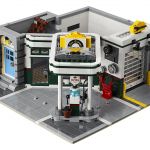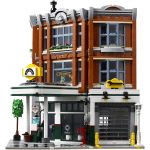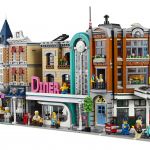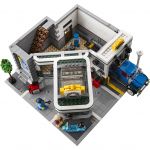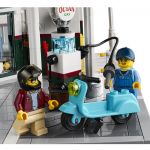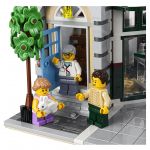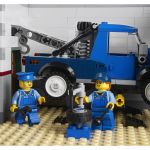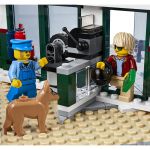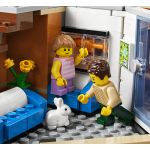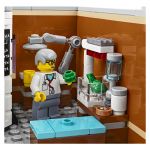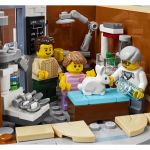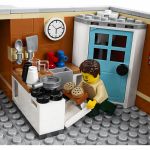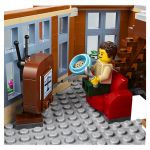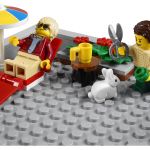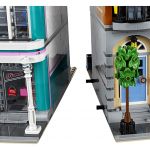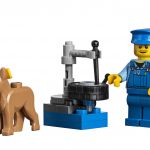Reviewed by Thys Brits (SAFOLs Member, jhbLUG Member)

So, the 1st of January arrived, after much anticipation from the AFOL community, bringing the release of the Corner Garage, set 10264 as the annual modular Creator Expert set, for 2019.
The announcement of the set on 3 December came with the usual amount of feedback from the LEGO® community, a lot of it negative, similar to that for the previous modular, the Downtown Diner, set 10260. I was also not really convinced about the set, but recently have discovered that LEGO® often surprises me from what you see on the box, compared to what is inside. In short, I think the Corner Garage is a great set, very much different from most of the previous modular sets, and I’ll explain why I think so.
Firstly the basics, as is tradition with a product review such as this. The box is the standard size as the previous modular buildings. Some people have suggested that LEGO® are cutting down on box sizes, taking the environment into consideration, which can be seen in many of the new sets also released on 1 January. This is not the case with this set though. Opening the box reveals six sets of numbered bags for the 2568 pieces, with the sand baseplate and two loose grey plates. These are used along with bag set 4 for the first floor of the building, which is odd, since bag set 5 also contains these same plates to be used as the second floor of the building.
Bag sets:
- 1 and 2 are used for the ground floor
- 3 for the courtyard cover and the tow truck
- 4 for the first floor
- 5 for the second floor
- 6 for the roof.
The build took me about five to six hours altogether. Detailed images can be seen at the the bottom of this review from the Official LEGO® press release. However I put together a little display of the set with a few other sets, particularly the two modulars now retired, the Brick Bank and Detective’s Office.
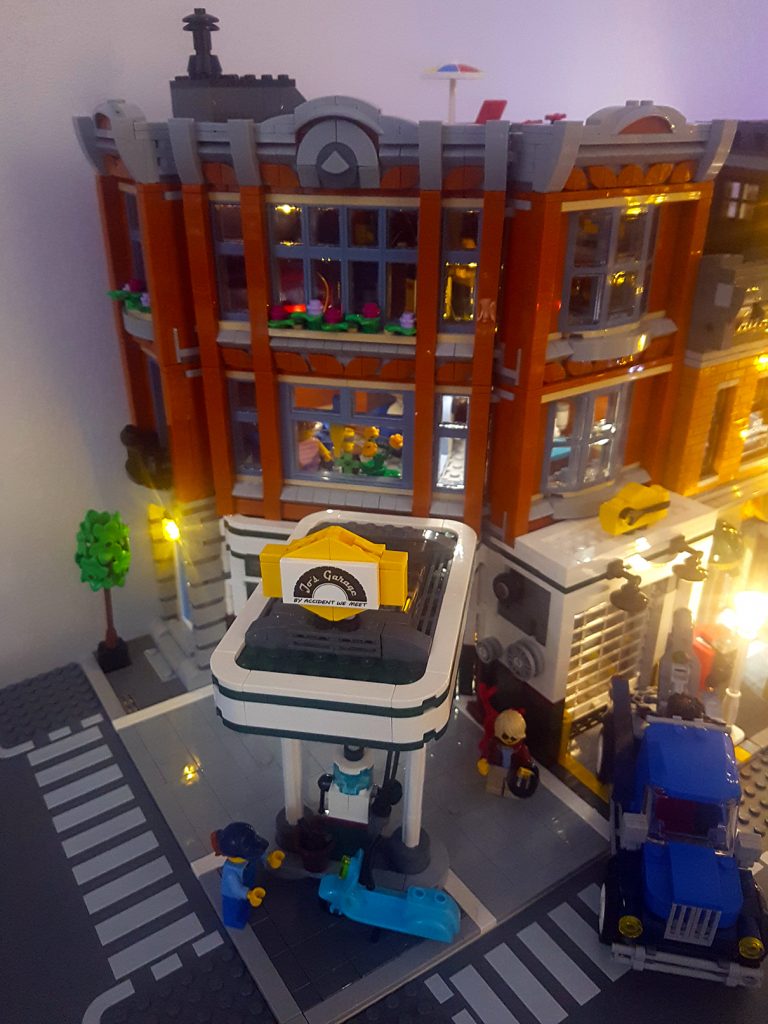
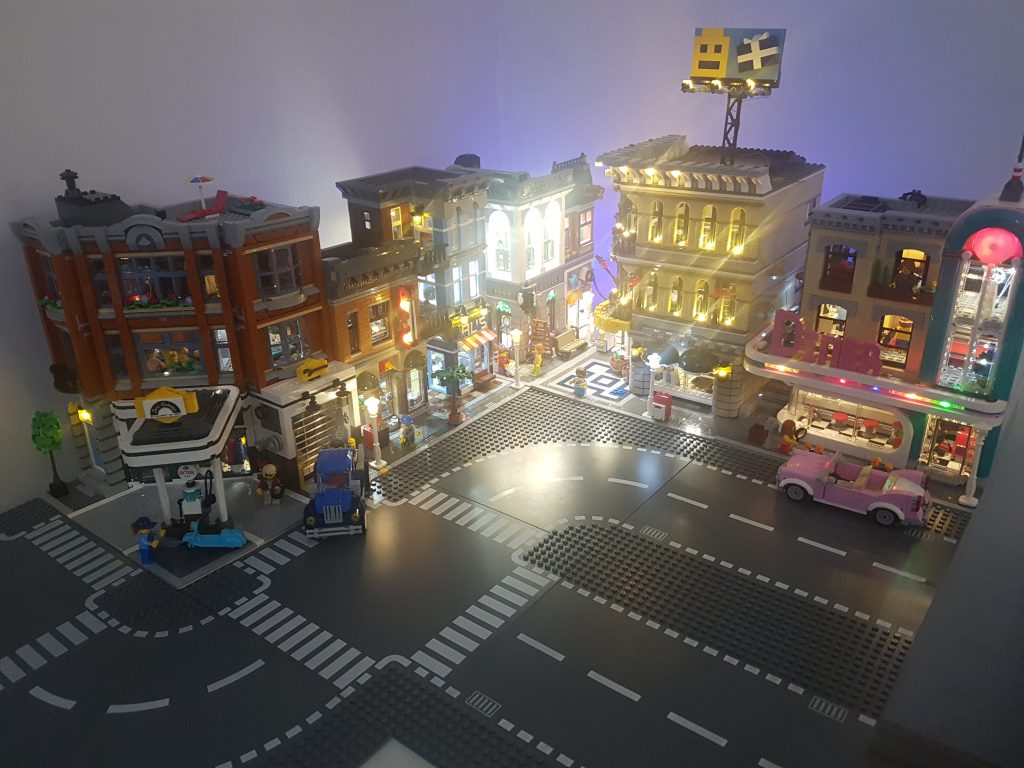
First off, the ground floor, which houses the actual garage. There is a lot of tiling to be done in this section, as about half the baseplate is covered with tiles for the filling station drive-through / courtyard. The interior of the garage is very simplistic, housing a manual lift module, which can be operated with a sliding mechanism from the back of the building, which is rather well thought out and one of many nifty design features in the set.
The other interesting design feature is that of the garage door, which doesn’t use the standard sliding-into-the-roof of previous sets with garage doors, but rather a roll-up mechanism. This leaves a lot more open space when opening up the set to play with it. The garage also has a toolbox on wheels, a wheel-alignment station and a cashier’s desk with cash register. Clever placement of 2×1 bricks with a technic pin extension on the exterior wall houses the display of spare wheel rims. All these features make me feel that the set actually got the wrong name, as this is, in fact, a tyre shop, not a garage.
The courtyard section is also very cleverly put together. To my mind, this was what LEGO® was trying to achieve with the set – showing us how to build at angles. Most LEGO® sets are built square, but this set has several examples of how to build across the normal straight lines. The petrol pump section is one, whilst the front of the building is the other.
After the ground floor is the tow-truck. Another part of the build that I feel sets elements of the Corner Garage apart for me from other LEGO® sets. Compared to cars in City sets, it is a truly Creator Expert build, very rounded off and also featuring some features from older sets, such as the front fender, which is similar to that of the fire engine from the old Fire House modular set’s fire truck. The towing mechanism is also detailed and not just a simple up-and-down swivel. In short, it adds to the set’s appeal, instead of detracting from it.
The first floor of the building houses a vet’s office. This is where most people found the set odd, since very few places in real life would one find a vet’s office on a first floor of a building, as well as finding much above a garage. However, I don’t mind it at all, seeing as LEGO® is supposed to be built using imagination and children’s make-believe.
The floor is divided into two sections. Firstly, the vet’s treatment room, featuring a fish tank, a desk with a built desk lamp, what looks like an incubation station, hosting a frog in the incubator, along with some bottles and a printed dog biscuit 1×1 round tile, a treatment table with a bunny and a research station with a built microscope. Second is the reception area, featuring a small balcony, two couches, a coffee table, pot plant and stand with a parrot on it. This is one section that I feel could have had more in it. The couches are put together very simply, however, this may also be a way for LEGO® to show how very simple techniques still work for complicated displays. The two sections are also another example of angled building, with the wall between then running diagonally across the floor. The windows of both the first and second floor also feature some SNOT (Studs Not On Top) techniques.
The second floor is a very simplistic lodging of what appears to be a young man, as it features a small micro-build truck on the one wall, a rock-and-roll poster and nothing much else, apart from the couch, TV and bunk-style bed. The kitchen build is quite detailed and the room also has a corner-toilet. The TV set also shows some clever techniques. Again, I suppose this floor could have been something completely different and much more detailed, as many people have hinted at. However, I still enjoyed putting it all together.
The last bag set contains the roof section. This features a door to the roof and a pool recliner with an umbrella for someone to tan on the roof, a flower bed and the rounding off of the building’s top. There are a lot of small pieces to put together in this, with 24 quarter-round tiles used for decoration on the front, along with 24 of the new 1×1 Roof Tile, of which there are 80 in the set. The set also features a number of other new(er) parts, such as 6250018: Plate 1X2 W/ Vert. Tube and 6217876: Tile 2X2, W/ Deg. 45 Cut. MOC’ers will love adding these parts to their collections.
In summary, if this were my first modular building, I would be enthralled. I think the reason people have had so many negative comments around the set is because there are now so many other sets, and MOC’s, out there. One other thing to remember is that many of the modular have very little interior detail, as mostly these are used as display pieces. I enjoyed building the set and will recommend it to anyone. The only real downside of the set is the price, with less than 100 parts more than the Downtown Diner, it costs R600 more than the previous release. A lot of people will hope this set will be released to stores other than the LEGO® Certified Store so it can become available on sales.


